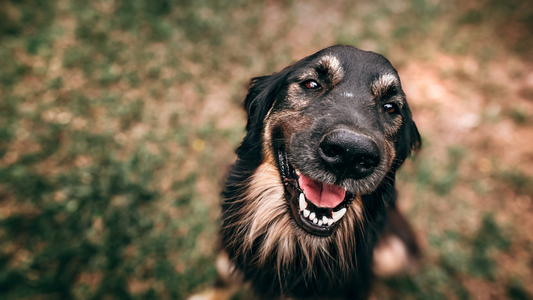Fleas can be a real pain for both pets and their owners. Recognising the early signs of a flea infestation is crucial for quick and effective treatment. Keep an eye out for excessive scratching, biting, or licking, as these are common symptoms of flea discomfort.
Understanding Flea Infestation
Fleas are tiny, wingless insects that feed on the blood of animals. They can cause severe itching and allergic reactions in pets. Even a small number of fleas can lead to significant discomfort and health problems for your furry friends.
Common Signs of Flea Infestation
Intense Scratching and Biting
One of the most obvious signs of a flea infestation is relentless scratching. Your pet might be biting, licking, or chewing at their skin to find relief from the itchy bites. These hotspots often appear on the neck, tail, and groin areas, where the skin is thinner.
Red, Inflamed Skin
Flea bites can cause intense irritation for your pet. These tiny punctures often result in red, inflamed patches of skin. You might notice your pet scratching, biting, or licking themselves excessively in an attempt to find relief.
Hair Loss
Continuous scratching and biting can result in hair loss. This is often seen around the tail base, back, and legs. The constant irritation and trauma to the skin can cause the fur to fall out, leaving bald patches.
Skin Lesions and Scabs
Constant scratching can lead to open sores and scabs. These irritated areas can become infected, causing further discomfort and potential health risks for your pet. It's important to address these skin issues promptly to prevent complications.
Secondary Infections
Constant scratching can break the skin, creating open wounds that are vulnerable to infection. Look out for signs of infection like increased redness, swelling, and pus. If you notice these symptoms, it's important to seek veterinary care quickly to prevent further complications.
Areas Commonly Affected by Flea Infestation
Tail Base
The tail base is a common area where hair loss and irritation occur due to flea bites. Pets often bite and scratch this area, leading to significant discomfort and visible signs of infestation.
Belly and Groin
The belly and groin areas are also frequently affected by flea bites. The skin in these regions is more sensitive and can become easily irritated, resulting in redness and inflammation.
Legs and Feet
Pets with flea infestations may also bite and lick their legs and feet. This behaviour can lead to hair loss and skin lesions in these areas.
Diagnosing Flea Infestation
If you suspect your pet has fleas, a trip to the vet is essential. They'll examine your pet for signs of fleas, such as flea dirt (which looks like black pepper), and rule out other skin conditions. Your vet can also recommend appropriate treatment options and provide guidance on preventing future infestations.
Effective Flea Control and Treatment
Topical Treatments
Spot-on treatments are a common and effective method to control flea infestations. These products kill fleas and prevent future infestations. Follow your vet’s recommendations for the best products to use on your pet.
Oral Medications
For long-lasting flea protection, consider oral medications. These convenient pills kill adult fleas quickly and prevent new ones from hatching. Always consult your vet to find the best option for your pet.
Environmental Control
Regular cleaning is your secret weapon against fleas. Vacuum your home thoroughly and frequently to remove flea eggs, larvae, and adult fleas. Don't forget to wash your pet's bedding in hot water to kill any lingering pests.
Anti-Inflammatory Medications
If your pet is suffering from itchy skin, your vet might recommend medication to help ease the discomfort. Antihistamines and corticosteroids can help reduce inflammation and itching, providing much-needed relief for your friend.
Treating Secondary Infections
If the itching and scratching continue, it can lead to skin infections. You might notice redness, swelling, or even pus-filled bumps on your pet's skin. It's important to see your vet if you suspect a secondary infection, as they can prescribe the right medication to clear it up.
Long-Term Management and Prevention
Year-Round Flea Control
The best way to deal with fleas is to prevent them in the first place. Consistent use of flea prevention products, combined with regular checks for signs of infestation, can save you and your pet a lot of hassle. Remember, prevention is always better than cure.
Regular Grooming
Regular grooming is more than just pampering; it's a crucial part of flea prevention. Brushing your pet's coat helps remove fleas, eggs, and larvae, keeping them comfortable and flea-free.
Clean Living Environment
Regular cleaning is your secret weapon against fleas. Vacuum your carpets, rugs, and furniture often to remove flea eggs, larvae, and adult fleas. Don't forget to wash your pet's bedding in hot water to kill any lingering pests. A clean home is the first step to a flea-free life.
Keeping Your Pet Comfortable and Healthy
Fleas can cause significant discomfort and health problems for your furry friend. By understanding their life cycle and taking proactive steps, you can protect your pet from these pesky parasites. At The Healthy Pet Co., we're committed to helping you create a flea-free environment. With our range of products and expert advice, you can ensure your pet's comfort and wellbeing.




